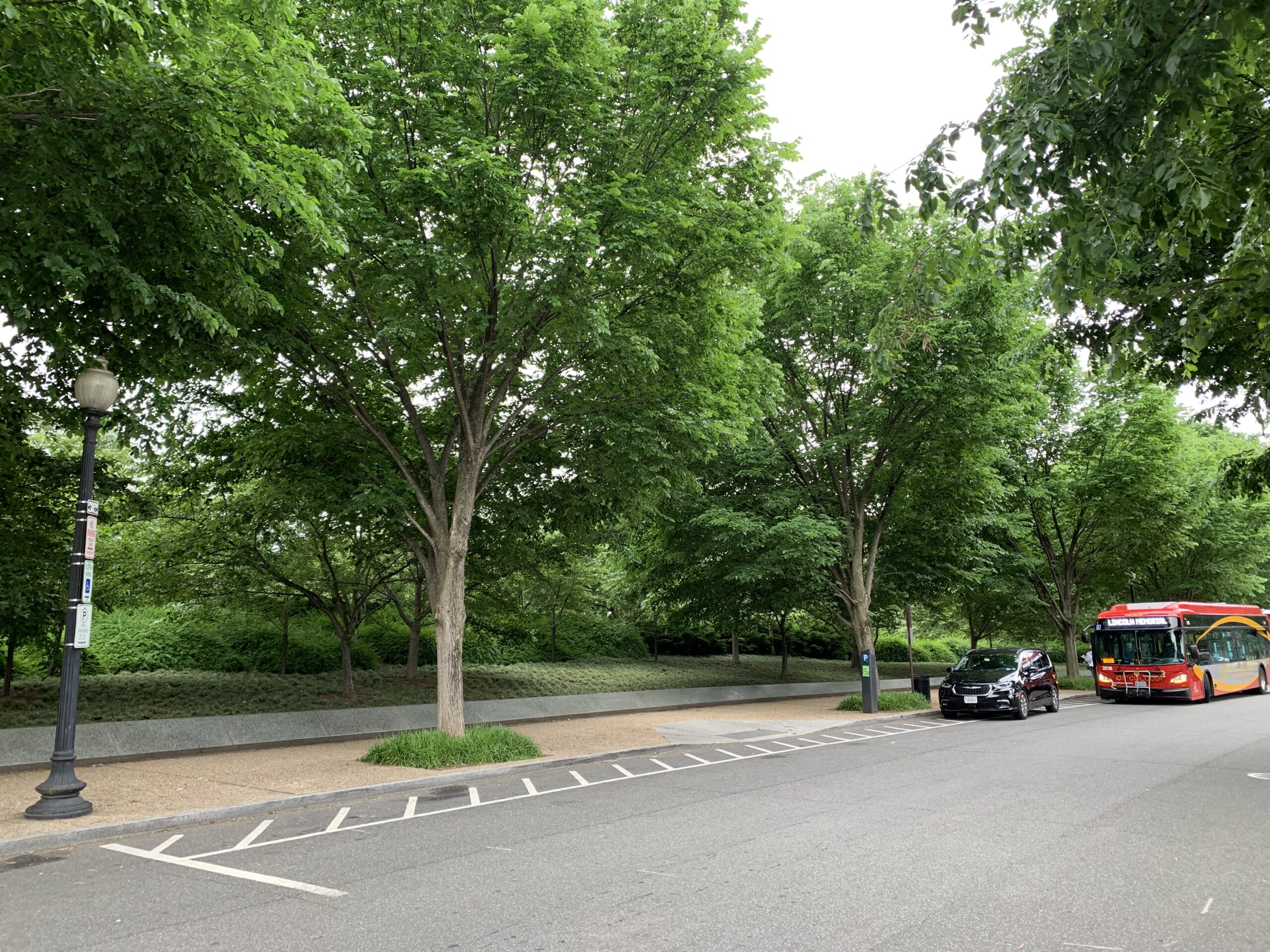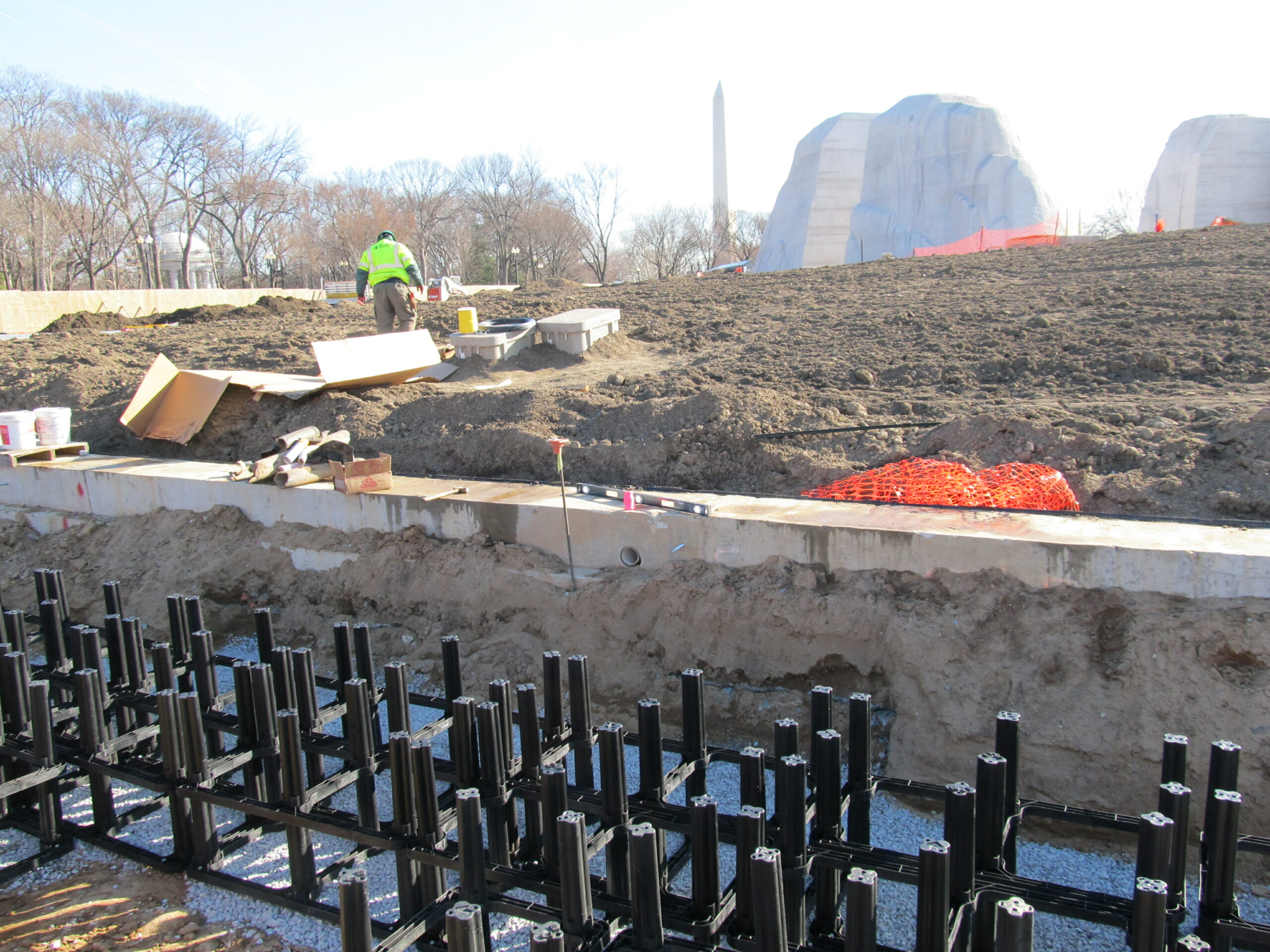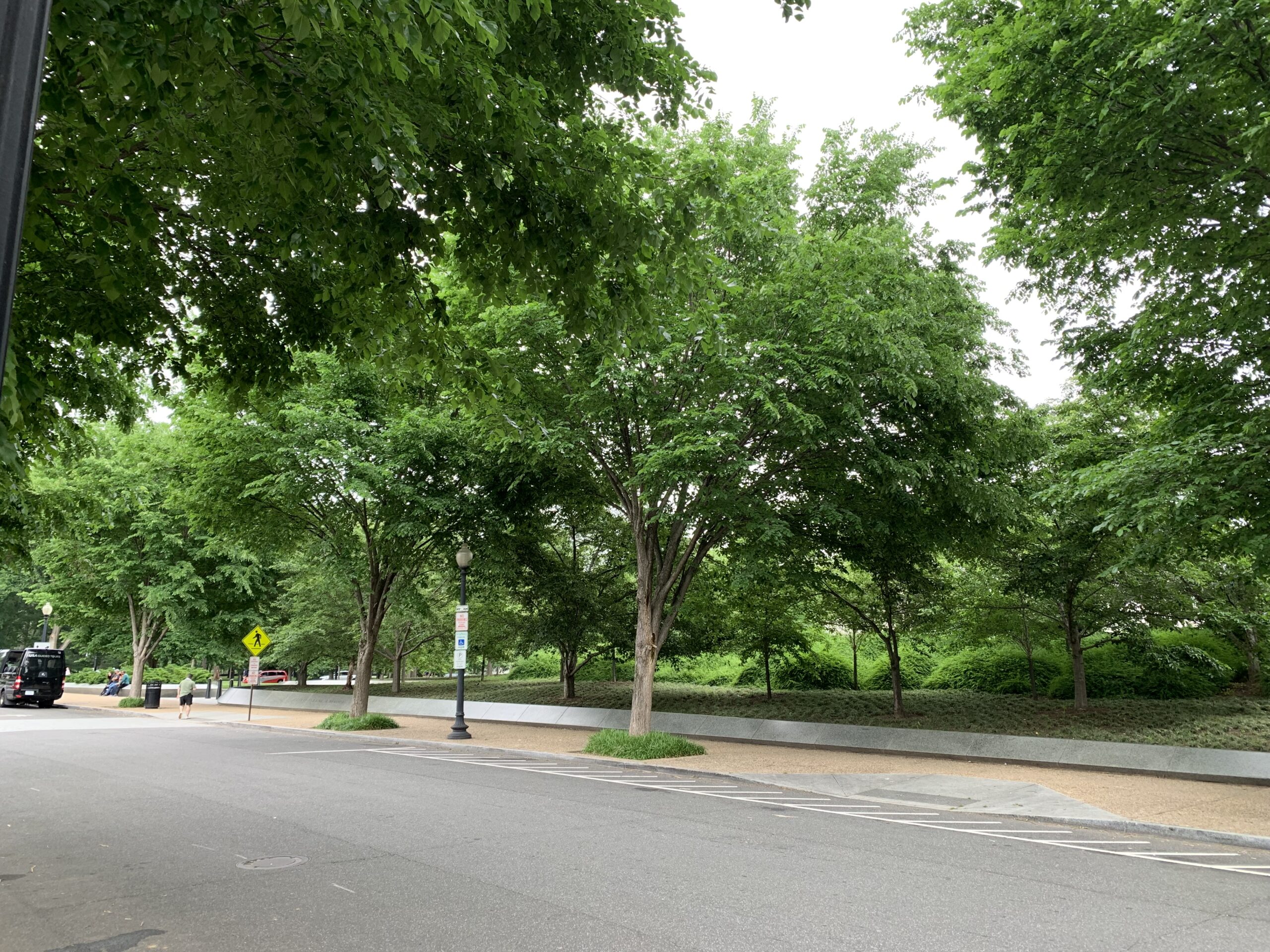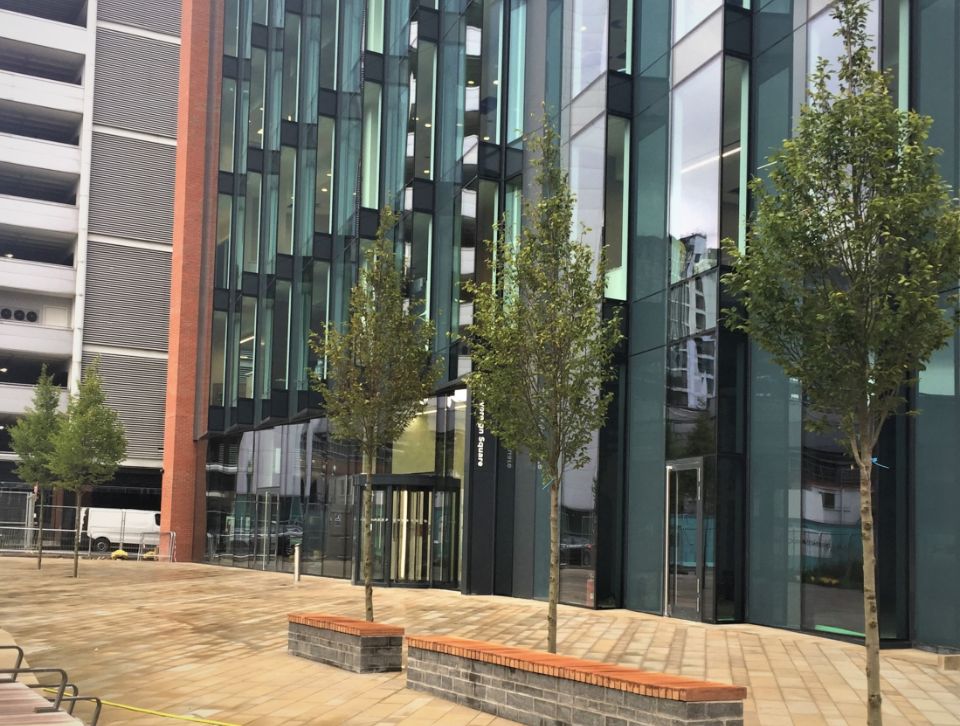Plaza and streetscape trees planted in DeepRoot Silva Cells ensure robust canopy growth while also providing on-location stormwater benefits

Opened in 2011 after nearly two decades of development and construction, the Martin Luther King Jr. National Memorial in Washington D.C. centers around a 30-foot white granite statue dedicated to the Civil Rights icon. An important element of the memorial’s design plan was a reverent landscaped area surrounding the monument, an effort spearheaded by the team at Oehme van Sweden Landscape Architecture. In addition to trees planted in the plaza adjacent to the visitor center, project planners wanted to maintain the solemnity of the space by separating it from the highly trafficked West Basin Drive — and by utilizing the DeepRoot Silva Cell to support these 19 plaza and streetscape trees, proper canopy coverage was ensured, guaranteeing flourishing tree growth and the desired bordering green wall for years to come (in addition to helping manage at-source stormwater).
Number of Silva Cells: 1,250 frames
Amount of Soil Volume Per Tree: 658 ft3
Number of Trees: 19
Type of Project: Integrated Trees, Stormwater, Plaza
Project Designer: Oehme van Sweden Landscape Architects
Project Contractor: Ruppert Landscape
Installation Date of Silva Cells: February 2011


Officially opened to the public on October 16, 2011, the Martin Luther King Jr. Memorial is a four-acre space with the Stone of Hope as its centerpiece: a 30-foot statue of King carved out of white granite by sculptor Lei Yixin. Located in West Potomac Park in Washington D.C., it rests in the busy hub between the Tidal Basin and West Basin Drive: a popular tourist attraction in the nation’s capital.
In addition to the monument itself, project developers prioritized safeguarding the solemnity of the space; the adjacent roadway provided an obstacle to the quiet, reverent environment envisioned by the design team. Oehme van Sweden (OvS) Landscape Architecture helped solve this problem by adding both cherry trees and American Elms in the surrounding plaza and streetscape area, a clever way to frame the space and maintain its independent, profound atmosphere.
Ensuring robust tree canopy coverage was, perhaps more than most green infrastructure initiatives, essential to the success of this project. An ambiance-appropriate environment for the memorial could not be achieved without a distinct division between road traffic and the monument itself. This presented a challenge to the design team, as the paved area necessitated compacted soil volume — inhospitable terrain for flourishing root growth. Likewise, it was important for area stormwater to be managed before draining into the nearby Tidal Basin.
As a solution to both obstacles, OvS turned to the DeepRoot Silva Cell system.

Silva Cells, a suspended pavement system allowing quality, uncompacted soils to be utilized in urban environments, was able to provide 19 trees in the MLK Memorial space with more than 650 cubic feet of soil volume per tree. Ten cherry trees adjacent to the Memorial’s Visitor Center in a “break-out” zone offer shady respite to area pedestrians.
OvS likewise planted nine American Elm trees along the road at the Memorial’s entrance, each one also accessing loamy soils within the Silva Cells. The tall, healthy trees reduce cooling costs in the summer, provide wind break in the winter, and create an overall more pleasant visitor experience. The ultimate goal for these trees is to create an overarching canopy at 40-foot on center.
There were challenges to the design of this site. The original site soils were all fill of various compositions, as well as a compacted hardpan that did not drain well. High-invert elevations from available sub drains were also drainage challenges. Soil and drainage designs had to work with these obstacles, while not compromising the design intent and other engineering considerations, to provide the required soil volumes and conditions for the trees.
The site includes a stormwater management component. Surface water within the planting beds was designed to pass into the planting soil within the Silva Cell system to irrigate the trees and filter stormwater prior to passing into the adjacent Tidal Basin. Finally, expected periodic storm surge flooding from the Potomac River had to be allowed to inundate the site while letting plantings survive. This was inadvertently tested on the initial dedication day when the Memorial flooded, causing the postponement of the dedication. No plants were lost.
Ten-plus years after the dedication of the MLK Memorial, it remains a favorite D.C. attraction. The area trees are no small feature in the space’s popularity; indeed, the trees — which continue to show impressive year-over-year growth — won a 2015 Canopy Design Award from Casey Trees.



-2015 Casey Trees Canopy Design Award
Oehme van Sweden has continued to work with DeepRoot after their success on the MLK project, including this installation in Capitol Hill.
